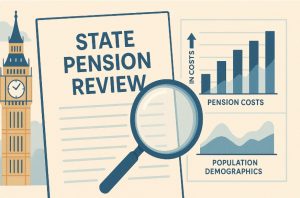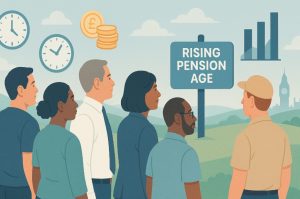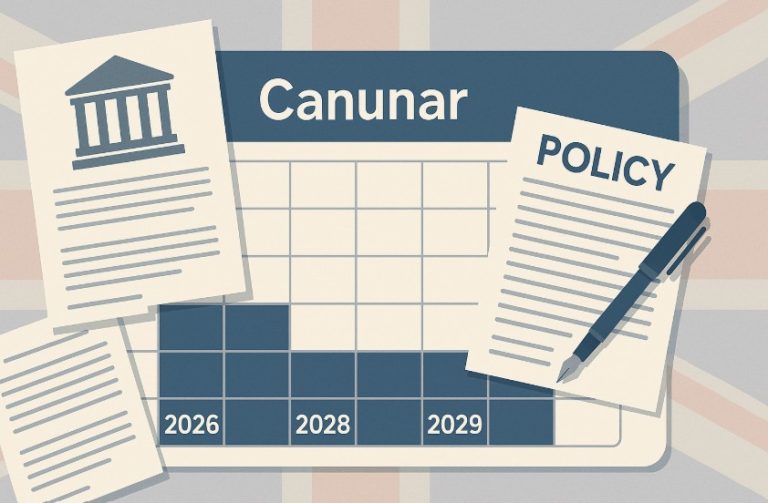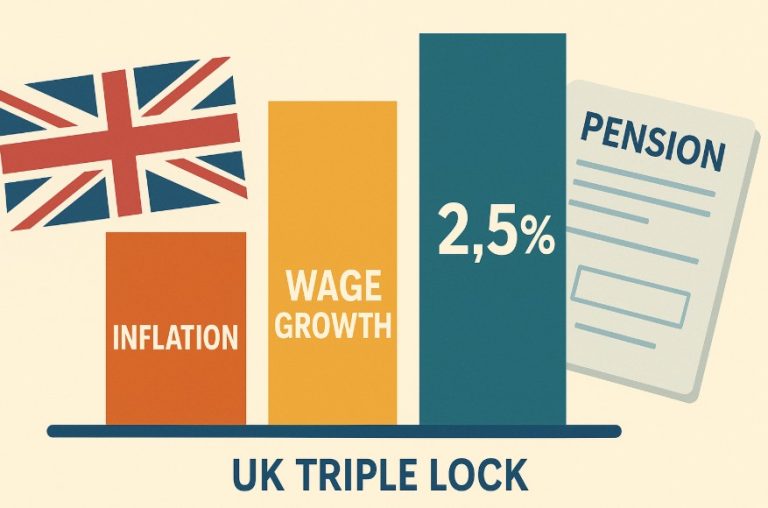The UK government has initiated an early review of the state pension age, a move that could lead to significant changes in how and when citizens access retirement benefits.
This review, originally due by 2029, comes amid growing financial pressures and demographic shifts.
With life expectancy, fiscal sustainability, and retirement outcomes under scrutiny, the outcome may impact millions of future retirees.
Understanding what’s being reviewed and who is involved is essential for those planning for later life.
Why Is the Government Reviewing the State Pension Age Now?

The UK government has launched an early review of the state pension age, despite having until 2029 to complete its next mandatory assessment under the 2014 Pensions Act.
Liz Kendall, the current Work and Pensions Secretary, stated that this decision is part of a broader strategy to evaluate retirement outcomes and ensure the sustainability of the UK pension system.
Key drivers of the early review include:
- A growing ageing population that will place increased demand on the pension system
- The rising fiscal cost of delivering state pension benefits
- The need to align pension policy with updated life expectancy projections
The Department for Work and Pensions confirmed that while the review could conclude any time before 2029, accelerating the process allows for earlier consideration of necessary reforms.
Bringing this forward signals a sense of urgency and a government intent on proactively shaping retirement policy.
What Are the Current and Proposed State Pension Ages in the UK?
Currently, the state pension age in the UK is 66 for both men and women. This is set to rise to 67 between 2026 and 2028, with another increase to 68 expected by the late 2030s or early 2040s.
However, speculation is growing that this timeline could be revised. An accelerated increase might be implemented sooner than expected if the current review recommends it.
These changes are being examined to reflect the balance between working life and time spent in retirement.
Table: UK State Pension Age Timeline
| Year Range | State Pension Age | Notes |
| Present | 66 | For both men and women |
| 2026–2028 | 67 | Already scheduled under current legislation |
| 2039 (tentative) | 68 | Possible acceleration being reviewed |
The state pension age is not fixed indefinitely. It is designed to evolve alongside life expectancy and fiscal needs, ensuring that the pension system remains viable for future generations.
How Will the Review Affect Future UK Retirees?

A key focus of the review is to assess how any increase in the state pension age will affect the working population.
For future retirees, a raised pension age means more years in employment before becoming eligible for state benefits.
The government is also considering how many years individuals can reasonably expect to spend in retirement.
The Government Actuary’s Department has been asked to provide updated data on life expectancy and the share of adult life lived after retirement. This will help in forming a fair and evidence-based policy.
Key considerations include:
- Maintaining fairness between generations regarding working years and retirement duration
- The implications for physical and mental health, especially for manual labour sectors
- Economic disparities between regions with differing life expectancies
Longer working lives could affect pension adequacy, health outcomes, and employment opportunities for older workers.
Who Is Involved in the Review and What Are Their Roles?
The review is being led by Liz Kendall, supported by various independent and government bodies. One of the key appointments is Dr Suzy Morrissey from the Pensions Policy Institute.
She will lead the independent analysis on what factors the government should consider regarding the pension age.
Additionally, the Government Actuary’s Department is involved in producing statistical models to inform how long people are expected to live in retirement.
These forecasts are central to calculating a fair balance between the years spent working and those spent receiving pension benefits.
Together, their inputs will shape future policies that affect millions of UK workers.
What Financial Pressures Are Driving Potential Changes?
Rising state pension costs are one of the primary drivers behind the government’s decision to review the pension age earlier than required.
The current expenditure trends, combined with future economic forecasts, suggest that without intervention, the UK’s pension system may become financially unsustainable.
Increasing Pension Expenditure
In 2023–24, the state pension cost the UK government £124 billion, representing approximately 5% of national GDP. This marks a steep rise from just 3.5% of GDP in 2000.
With an ageing population and increasing life expectancy, more individuals are drawing pensions for longer periods. This prolonged payout is placing growing strain on public finances.
According to fiscal projections, pension spending is expected to exceed £150 billion by the early 2030s unless corrective policies are introduced.
Ageing Population and Longer Retirement
The demographic profile of the UK is shifting significantly. The proportion of individuals aged 65 and above is growing at a faster rate than the working-age population. This change reduces the number of workers supporting each pensioner, creating a dependency imbalance.
As a result:
- The number of people eligible for the state pension is increasing
- The duration for which they receive benefits is also expanding
- The tax base funding state pensions is shrinking relative to costs
This situation creates a fiscal pressure point that compels policymakers to consider either increasing the pension age, reducing benefits, or encouraging more private savings.
Stagnant Retirement Contributions
While auto-enrolment has increased workplace pension participation, many individuals still contribute only the minimum required amount. The low rate of private savings especially among the self-employed and low-income earners, adds to the pressure on state-funded pensions.
Without a robust private pension system to offset state costs, future retirees could become overly reliant on the state pension, further driving up government expenditure.
Could the Triple Lock Impact Future State Pension Reforms?

The triple lock is a critical factor in both pension adequacy and pension affordability. While it guarantees an increase in the state pension each year, it also creates long-term cost implications for the Treasury, especially in periods of high inflation or wage growth.
What Is the Triple Lock?
The triple lock is a mechanism that ensures the UK state pension increases annually by the highest of the following three measures:
- Consumer Price Index (CPI) inflation
- Average earnings growth
- 5% minimum increase
Introduced in 2010, it was designed to protect pensioners’ incomes from being eroded by inflation and to maintain the standard of living in retirement.
Fiscal Impact of the Triple Lock
While the triple lock has been successful in boosting the state pension value over time, it has also significantly increased pension-related spending.
Recent figures suggest that maintaining the triple lock will cost the government an additional £31 billion per year by the end of this parliamentary term. When applied over the long term, this increase becomes one of the most expensive components of the welfare budget.
Impact Scenarios:
| Economic Condition | Triple Lock Increase Driver | Financial Effect on Pension Budget |
| High inflation | CPI | Sharp rise in pension payments |
| Rapid wage growth | Earnings | Increased long-term obligations |
| Low economic growth | 2.5% floor applies | Sustained rise despite stagnation |
Debate Over Reforming the Triple Lock
Policy experts and think tanks have proposed revising the triple lock to reduce fiscal volatility. Alternatives include:
- A “double lock” that removes the 2.5% floor
- Linking increases solely to inflation or wage growth, whichever is lower
- A tiered pension model where only lower-income retirees receive inflation-proof guarantees
The government’s current stance is to maintain the triple lock for the duration of this parliament, but longer-term changes remain a topic of active policy discussion.
Balancing Pensioner Support and Budget Constraints
While the triple lock helps ensure a dignified retirement for millions, particularly those without additional savings, it must be weighed against the challenge of funding other public services like healthcare and education.
A reformed triple lock system may eventually emerge as part of a wider strategy to:
- Make pension expenditure more predictable
- Improve fairness across generations
- Ensure sustainable long-term retirement benefits
In summary, the triple lock remains a vital but increasingly costly element of the state pension framework. Its future will likely be central to the government’s broader pension reform agenda.
What Is the Purpose of the New Pension Savings Commission?
In tandem with the pension age review, the government has relaunched a commission focused on improving the UK’s private pension system.
This initiative is being led by a panel including Baroness Jeannie Drake (a member of the original Turner Commission), Bath University professor Nick Pearce, and former Kingfisher CEO Sir Ian Cheshire.
Their mission is to assess:
- How to expand participation in private pension saving
- Whether auto-enrolment should be enhanced or adjusted
- How to support vulnerable and low-income groups in retirement planning
The commission is expected to provide a comprehensive roadmap that ensures future pensioners can achieve a financially secure retirement through a combination of state and private pensions.
How Are Self-Employed and Low-Income Workers Affected?
One of the critical concerns highlighted by the review is the large proportion of the UK’s working-age population that is not saving for retirement.
Approximately 18 million people currently make no pension contributions at all. This includes a significant number of self-employed individuals.
Only about one in five self-employed workers is currently saving into a pension, down from around 50% in the 1990s. This shift highlights the need for more targeted support and potentially new pension models for the self-employed.
For low-income workers, even auto-enrolment may not be sufficient. While the minimum contribution rate under current auto-enrolment rules is 8%, this may not provide adequate income in retirement, particularly if individuals have long career breaks or low earnings.
What Long-Term Strategies Are Being Considered?

The UK government recognises that securing the future of retirement requires a multi-pronged approach.
The current review and the newly relaunched pension savings commission are expected to deliver aligned recommendations that support both state and private pension frameworks.
Long-term strategies being considered include:
- Adjusting the pension age based on evolving life expectancy
- Promoting financial education around pension planning
- Strengthening employer responsibilities in contributing to workplace pensions
- Creating more flexible pension saving solutions for self-employed and gig economy workers
The aim is to provide a sustainable system where all individuals, regardless of employment type or income level, can look forward to a stable retirement.
When Will the Results of the Review Be Announced?
While the statutory deadline for the review is March 2029, the early launch suggests that the government may conclude and publish findings much sooner.
Given the current economic context and political momentum, stakeholders expect initial recommendations within the next one to two years.
However, implementation of any proposed changes will likely be staggered to avoid abrupt disruption, particularly for those nearing retirement age. This staggered rollout would allow affected individuals time to adjust their financial plans and retirement expectations accordingly.
The government is expected to keep the public informed throughout the process to promote transparency and ensure public confidence in the reform agenda.
Conclusion
The government’s decision to launch an early review of the state pension age marks a pivotal moment for UK retirement policy. With demographic pressures mounting and financial costs rising, reforms appear inevitable.
The direction of change may include a faster increase in the pension age, more robust private saving mechanisms, and a wider national conversation about retirement expectations.
For now, those already receiving a state pension or nearing retirement are unlikely to see major disruptions.
But for the millions of younger workers currently not saving enough for later life, this review is a signal to take pension planning more seriously.
FAQs About the Government Review of the State Pension Age
What triggers a review of the state pension age in the UK?
Under the 2014 Pensions Act, the government must review the state pension age every six years, considering factors such as life expectancy, demographic shifts, and fiscal sustainability.
Will the state pension age definitely increase?
While no final decision has been made, experts believe it is likely due to financial and demographic pressures. Any rise would be gradual and communicated well in advance.
How does the triple lock affect state pension costs?
The triple lock ensures the state pension increases yearly based on inflation, earnings, or 2.5%, whichever is higher. This has increased pension costs significantly over time.
Who is most likely to be affected by a future rise in the pension age?
Younger workers, especially those in their 30s and 40s, are the most likely to be affected by changes to the state pension age as reforms typically apply to future retirees.
Are there any proposals to help the self-employed save for retirement?
The new pension commission is expected to explore options for improving pension access and incentives for the self-employed, who currently have low participation rates.
What role does life expectancy play in pension policy?
Life expectancy directly affects how long people draw pensions. Policies aim to keep a balance between working years and time spent in retirement, which influences pension age decisions.
Will changes to auto-enrolment be part of the reform?
The government has stated it won’t raise auto-enrolment rates this parliament, but the commission will assess long-term strategies to encourage broader and deeper pension contributions.
Related Articles:






